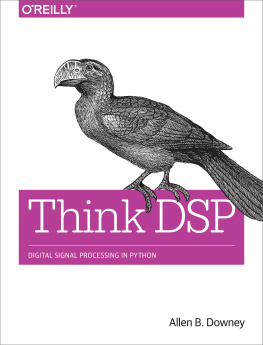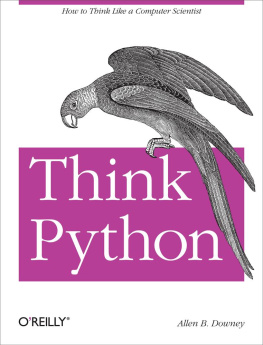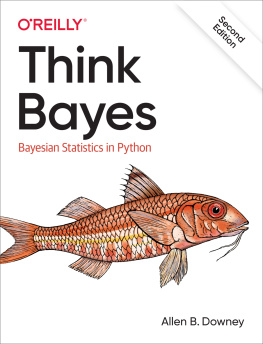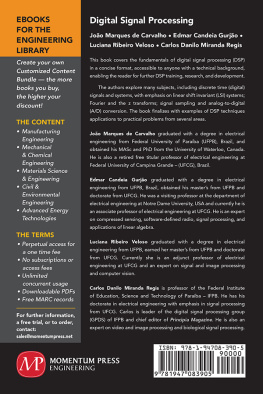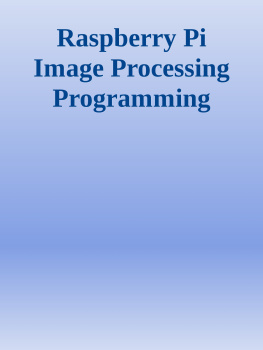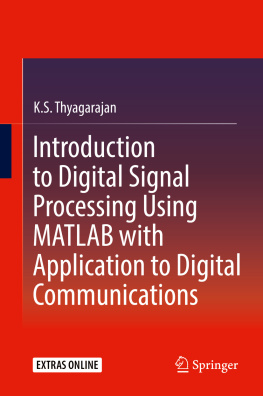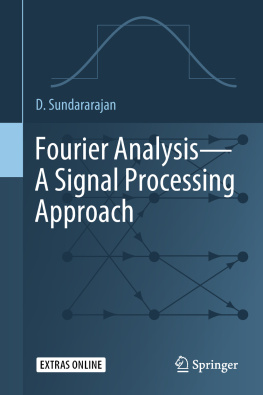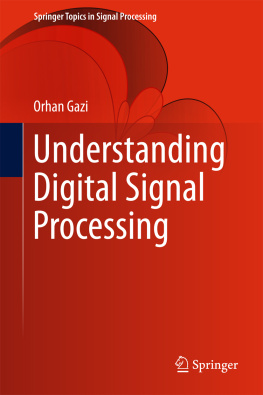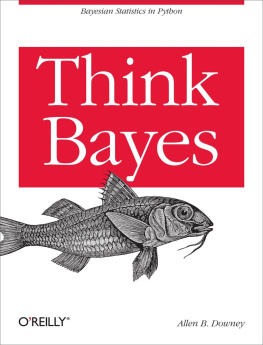Allen B. Downey - Think DSP: Digital Signal Processing in Python
Here you can read online Allen B. Downey - Think DSP: Digital Signal Processing in Python full text of the book (entire story) in english for free. Download pdf and epub, get meaning, cover and reviews about this ebook. year: 2016, publisher: O’Reilly Media, genre: Home and family. Description of the work, (preface) as well as reviews are available. Best literature library LitArk.com created for fans of good reading and offers a wide selection of genres:
Romance novel
Science fiction
Adventure
Detective
Science
History
Home and family
Prose
Art
Politics
Computer
Non-fiction
Religion
Business
Children
Humor
Choose a favorite category and find really read worthwhile books. Enjoy immersion in the world of imagination, feel the emotions of the characters or learn something new for yourself, make an fascinating discovery.
- Book:Think DSP: Digital Signal Processing in Python
- Author:
- Publisher:O’Reilly Media
- Genre:
- Year:2016
- Rating:5 / 5
- Favourites:Add to favourites
- Your mark:
Think DSP: Digital Signal Processing in Python: summary, description and annotation
We offer to read an annotation, description, summary or preface (depends on what the author of the book "Think DSP: Digital Signal Processing in Python" wrote himself). If you haven't found the necessary information about the book — write in the comments, we will try to find it.
If you understand basic mathematics and know how to program with Python, youre ready to dive into signal processing. While most resources start with theory to teach this complex subject, this practical book introduces techniques by showing you how theyre applied in the real world. In the first chapter alone, youll be able to decompose a sound into its harmonics, modify the harmonics, and generate new sounds.
Author Allen Downey explains techniques such as spectral decomposition, filtering, convolution, and the Fast Fourier Transform. This book also provides exercises and code examples to help you understand the material.
Youll explore:
- Periodic signals and their spectrums
- Harmonic structure of simple waveforms
- Chirps and other sounds whose spectrum changes over time
- Noise signals and natural sources of noise
- The autocorrelation function for estimating pitch
- The discrete cosine transform (DCT) for compression
- The Fast Fourier Transform for spectral analysis
- Relating operations in time to filters in the frequency domain
- Linear time-invariant (LTI) system theory
- Amplitude modulation (AM) used in radio
Other books in this series include Think Stats and Think Bayes, also by Allen Downey.
Allen B. Downey: author's other books
Who wrote Think DSP: Digital Signal Processing in Python? Find out the surname, the name of the author of the book and a list of all author's works by series.

